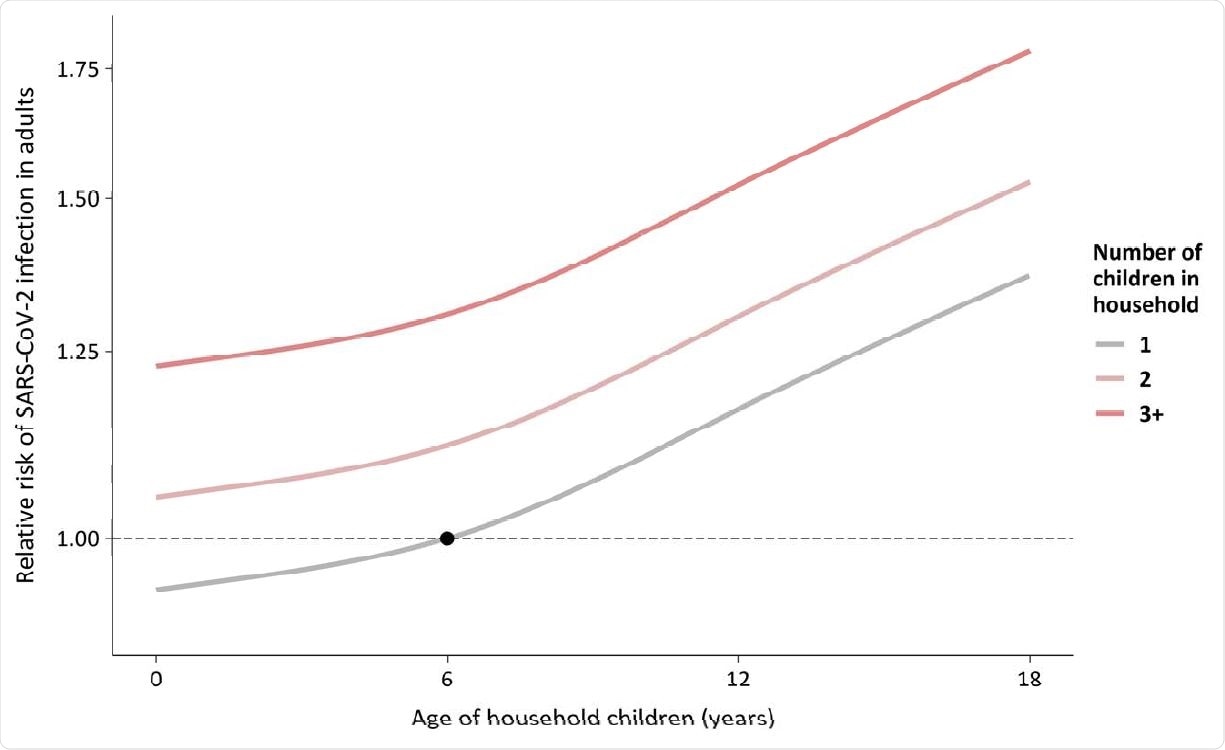Amid the coronavirus disease (COVID-19) pandemic, high-risk populations are more likely to develop a severe infection. These include the elderly and those with underlying health conditions.
Children are mostly spared from developing severe disease, but they can still be infected. They are tagged as spreaders of the severe acute respiratory syndrome coronavirus 2 (SARS-CoV-2), the virus which causes COVID-19, since they are mostly asymptomatic.
To determine the increased risk of SARS-CoV-2 infection in households with children, researchers at the Statens Serum Institute in Denmark compared the risk of SARS-CoV-2 infection between families with children and those without young children.
In the study, published on the pre-print server medRxiv*, the researchers found a slight but significantly elevated risk of SARS-CoV-2 infection in households with young children between 10 months and five years old. However, recent exposure to human coronaviruses does not reduce the risk of SARS-CoV-2 infection in households with young children.
COVID-19 in children
Infection with SARS-CoV-2 has limited treatment options, and immunity against it is minimal. Nevertheless, it is known that recent exposure to seasonally spreading human coronaviruses, like OC43 and NL63, is prevalent among young children during winter. These past infections may result in protection from SARS-CoV-2.
Also, studies showed serological evidence of pre-existing SARS-CoV-2 binding antibodies and T cell immunity in people not infected with SARS-CoV-2. This may be due to a previous human coronavirus (HCoV) infection.
However, like any other coronavirus, the immunity is not long-lasting, and it may become seasonal. It is, therefore, unknown if recent exposure to HCoVs reduces SARS-CoV-2 infection risk or disease severity.
The study
To determine the risk of contracting SARS-CoV-2 in households with young children, the researchers followed all adults in Denmark between the ages of 18 and 60 years from February 27 to November 15, 2020. There was a total of 3,079,736 adults who participated in the study.
The researchers used the Danish Civil Registration System, which provides demographic information on the population, including household members and children.
The researchers obtained data on PCR-tests for SARS-CoV-2 through MiBA, the Danish Microbiology Database, apart from the population information.
Of the 449,915 adults in Denmark living in households with young children, 5,761 tested positive for COVID-19. Meanwhile, among the 2.63 million adults without young children in the household, 33,788 tested positive for SARS-CoV-2.
The team noted that the risk of SARS-CoV-2 infection in adults living with children compared with those without children was a hazard ratio of 1.05. In terms of hospitalization among those infected, the team found a non-significant reduced risk of SARS-CoV-2 hospitalization among adults living in households with young children compared with those without children in the house.
They concluded that living in a household with young children was not tied to a decreased risk of SARS-CoV-2 infection, suggesting no strong preventive effect of recent exposure to other human coronaviruses.

The study was the first to explore household characteristics and SARS-CoV-2 infection, which enrolled an entire population of more than three million people. Also, the study captured the majority of SARS-CoV-2 cases in Denmark, a country with one of the highest polymerase chain reaction (PCR) testing rates in Europe.
There is also a heightened relative risk of infection during early reopening in Denmark, where daycare facilities opened.
“In summary, we found no evidence of a reduced risk of SARS-CoV-2 infection in adults living with young children,” the researchers concluded.
“On the contrary, we found a significant, slightly increased risk of SARS-CoV-2 infection, which, however, was attenuated when taking account of older children in the same household,” they added.
To date, Europe’s COVID-19 cases continue to rise, with the United Kingdom reporting the highest number of infections. The U.K. has over 4.2 million cases and over 124,000 deaths. Globally, the total number of cases has topped 115 million.
*Important Notice
medRxiv publishes preliminary scientific reports that are not peer-reviewed and, therefore, should not be regarded as conclusive, guide clinical practice/health-related behavior, or treated as established information.
